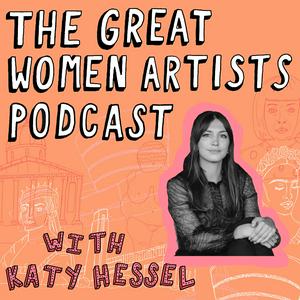Bharti Kher
I am so excited to say that my guest on the GWA Podcast is the world renowned artist, Bharti Kher.
Known for a seemingly limitless practice that spans painting, sculpture, installation, found objects, and more; that explores hybrid beings – fusing animals and humans, objects and nature – Kher’s extraordinary art-making looks at and exists both in the real world and imaginary. She is astute at seeing the potential in something, whether it be the magical superpowers of the human body or extent to which she can push materials into something they’re not, transforming them into something full of wonder. From using bindis like tiny paint strokes, melted down bangles to form a tower of bricks, animal heads and or plant-like forms that transform a human from something real to into something mythical – looking at a Kher work is to see alchemy play out in a solid object.
Born in England to Indian parents in 1969, Kher studied at Newcastle Polytechnic, before venturing to India, where she has lived since 1993. Settling in New Delhi, where she works in an almost fantastical four-story laboratory-like studio (+roof) that I was lucky enough to visit earlier this year, Kher has become one of the most celebrated artists in Asia, and beyond, exhibiting at institutions all over the world.
Often taking the female body as a framework for her ideas – a form that, although prevalent in historical sculpture, has rarely been depicted by the female itself – Kher focuses on its multitudinous aspects. She adds leaves, horns and mannequins to show the many universes it contains, and to push against the rigidity of around who we are – as she has said, “what we are, how we function, what we do, where we sit, where we don’t sit.”
Drawing on religion to mythology, womanhood and more, Kher’s works feel ancient, present, and futuristic and, in a time like today when we are looking to alternative stories away from the ones dominating our world, forever enchanting and enriching, guiding us to seeing how extraordinary beings can be. Her current exhibition, aptly titled Alchemies, at Yorkshire Sculpture Park brings together work from the last few decades, both small and colossal, and gets us to think about how the ultimate job of the artist is as an alchemist: someone who can transform the ordinary into the extraordinary, see the myriad possibilities in a single medium, and show us something we instantly recognise despite never having witnessed it before…
Kher's exhibition at Yorkshire Sculpture Park!
https://ysp.org.uk/whats-on/exhibitions/bharti-kher?gad_source=1&gbraid=0AAAAADfc_iZaY34c9UpnqEXtFtVVvF0Pg&gclid=Cj0KCQjw2ZfABhDBARIsAHFTxGwcjlobrI69KMnQTB7ikxghVWdGF-6i2Ly8BM1VTYAYqjtAlSAsFnYaAo96EALw_wcB
--
THIS EPISODE IS GENEROUSLY SUPPORTED BY THE LEVETT COLLECTION:
https://www.famm.com/en/
https://www.instagram.com/famm_mougins // https://www.merrellpublishers.com/9781858947037
Follow us:
Katy Hessel: @thegreatwomenartists / @katy.hessel
Sound editing by Nada Smiljanic
Music by Ben Wetherfield
